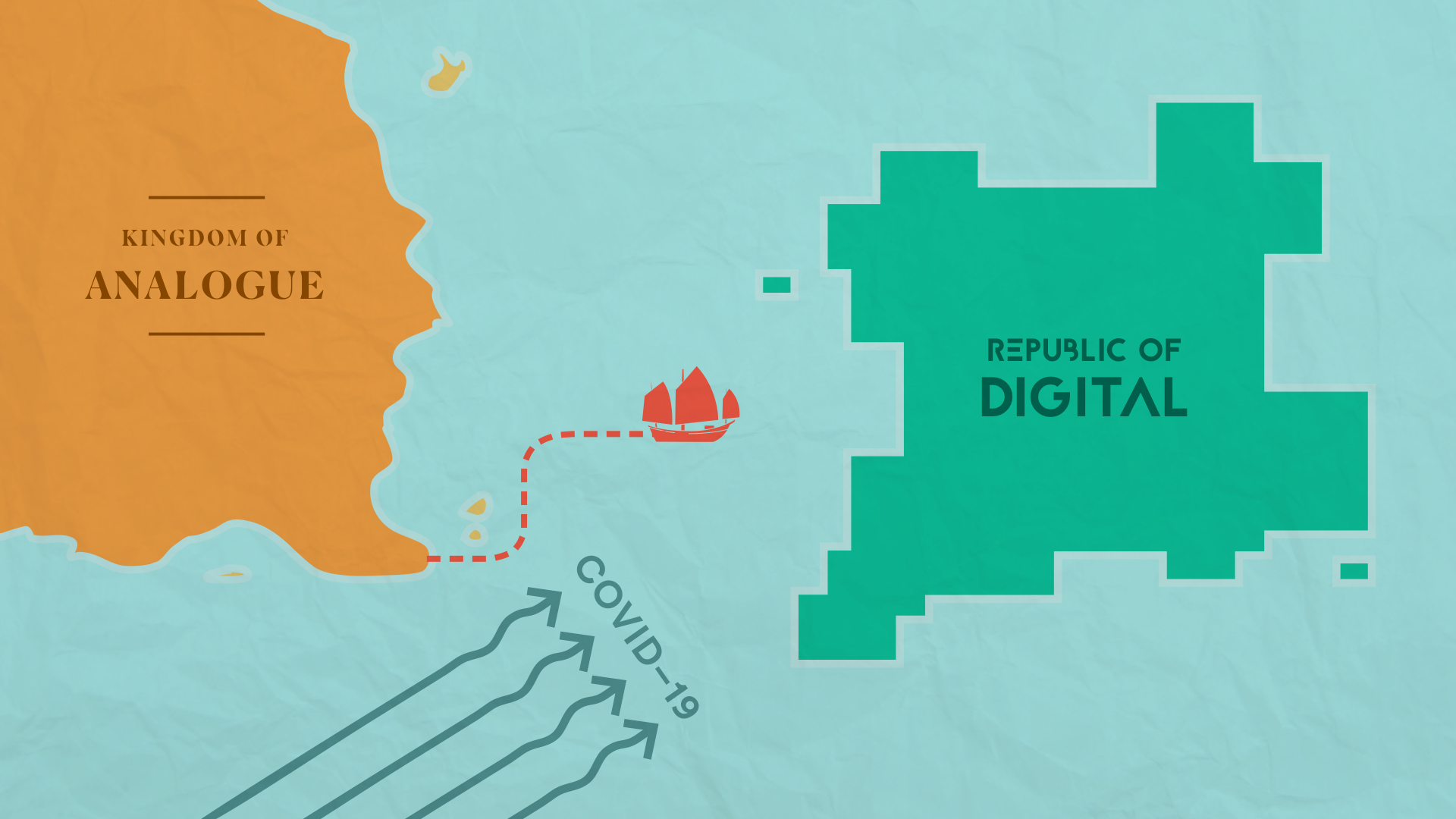The COVID-19 pandemic forced many, unprepared, into adopting unfamiliar digital tools. While Digital natives have thrived, The Digitally Displaced require new solutions to help them bridge the divide.

The COVID-19 pandemic has acted as a catalyst, accelerating the adoption of online tools and services at a rate rarely seen before. Sectors that were previously slow to adopt digital tools have been left unprepared, struggling to adapt during an already difficult time. This has resulted in an emergent group – ‘The Digitally Displaced’. While Digital Natives have adapted quickly to this new reality, things have not been so easy for those people and sectors who have been slower in their digital transformation.
Digital citizens
The analogy of digital natives and immigrants, referring to age groups’ relationships with and understanding of the Internet, was first coined by John Perry Barlow as part of the Declaration of the Independence of Cyberspace in 1996. The specific terms “digital native” and “digital immigrant” were popularised by education consultant Marc Prensky in his 2001 article entitled Digital Natives, Digital Immigrants.
The terms are useful in envisaging ‘digital’ as a nascent country. In this theoretical country, the native population are familiar with the national culture, language and experience. Immigrants who arrived with differing experiences may still be adapting to their new way of life in a somewhat foreign land.
Defining digital citizens
We can define high-level digital demographics by their familiarity with digital technology and the internet. In addition to the established Digital Native/Immigrant definitions, I propose a new group. This new group, named the ‘Digitally Displaced’, is a direct result of the accelerated societal changes that have been triggered by the COVID-19 pandemic.
Digital Natives — people who have grown up in the digital age, in close contact with computers, the Internet, and digital devices.
Digital immigrants — people who grew up before the advent of the Internet, came of age in a world dominated by print and television, and acquired familiarity with digital systems as an adult.
Digitally Displaced — people or businesses who have been rapidly forced into a digital need by forces outside their control.
The Digitally Displaced
The COVID-19 pandemic has created a new class of digital citizen. These are typically citizens of other, more analogue regions. Pushed by the external forces of the pandemic, they find themselves, ill-equipped, in an unfamiliar digital landscape. This group has had to react quickly, often against their will, to a new set of conditions and technologies, without prior planning.
Surviving not thriving
The past year of the pandemic has been typified by a reactive mindset for many people and small businesses. Finding quick fixes and stopgaps that allow people to carry on with their previous behaviours. They’ve coped with this novel situation, yet few could argue any of it has been ideal. The first year of the pandemic has been a ‘once in a generation’ experiment, played out in real time.
Overnight, remote working and remote education have gone from minority to majority status. Digitally native businesses, which were already set up for success have thrived. Behemoths such as Amazon have been the overall winners during the pandemic, reporting record profits.
However, small, analogue businesses have been forced to adapt or risk going under. They have had to adopt online solutions, delivery services, and streaming tools. While some existing solutions were available to them, it’s been a battle just to survive, with many casualties along the way. This divide between Digitally Native companies and Digitally Displaced businesses has grown wider during the pandemic. Some small businesses have been more vulnerable to the pandemic than others.
Related demographics
There are adjacent issues that may also affect the Digitally Displaced demographic, further exacerbating the problems of this group.
The concept of ‘Digital Poverty’ may disproportionately affect the Digitally Displaced. This could be defined as a lack of sufficient hardware, software or internet access to enable users to make use of digital products and services. Working from home is only possible if an employee has the correct equipment and a reliable data connection. Remote education is only possible if every student has access to the necessary technology and services. These are issues that were gradually being planned for across various sectors. The pandemic accelerated the need for transformation from a number of years to a matter of weeks.
Those with disabilities and accessibility requirements are another group that is more likely to be part of the Digitally Displaced demographic. The fast adoption of existing solutions and ‘making do’ is unlikely to take into consideration the needs of this group.
The pandemic has thrown up some of the biggest challenges and opportunities we’ve seen in peacetime. As the vaccine rollout progresses and cases subside, now is the time to start addressing these challenges head-on. We should embrace the pandemic’s incentive for change, rethinking how we want to work, educate and trade in the 21st Century.
Some of the challenges that must be addressed to better serve the Digitally Displaced
- Improvements in remote working
- Solutions for remote/physical hybrid working
- Solutions for more inclusive remote education
- E-commerce & delivery solutions for small physical retailers to move into online sales
- Streaming & telepresence solutions for small service-based businesses
- Improvements in Telemedicine